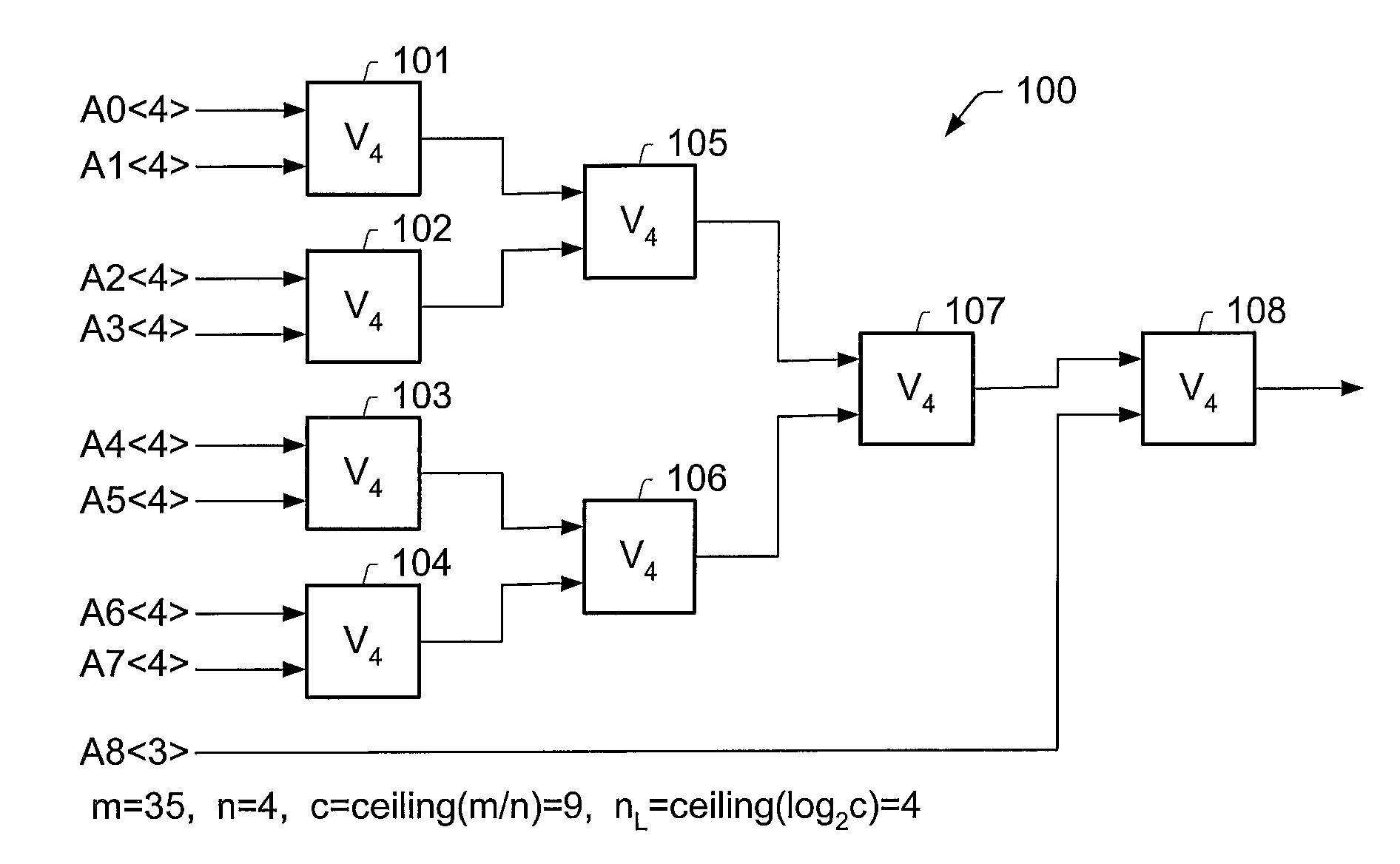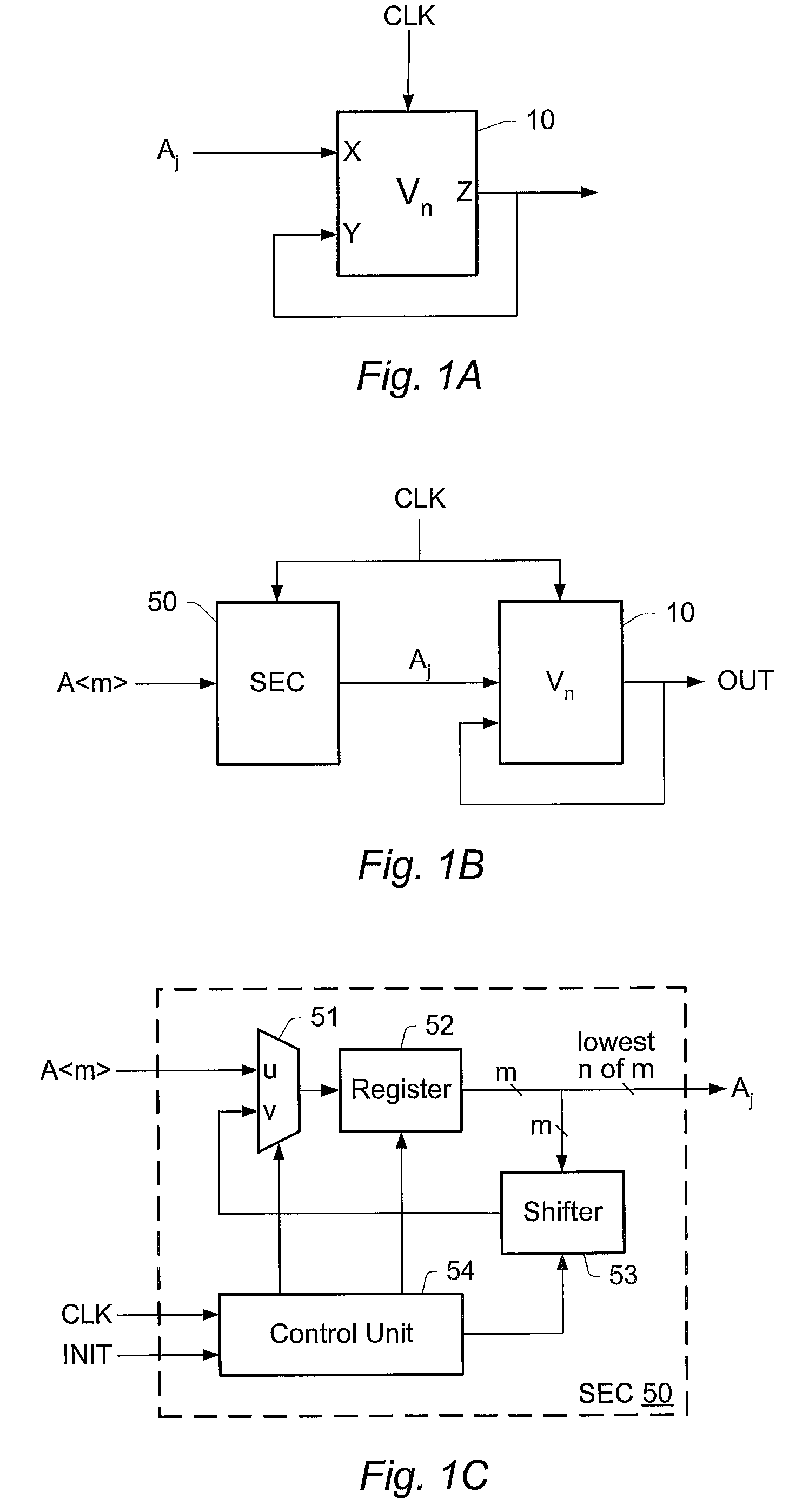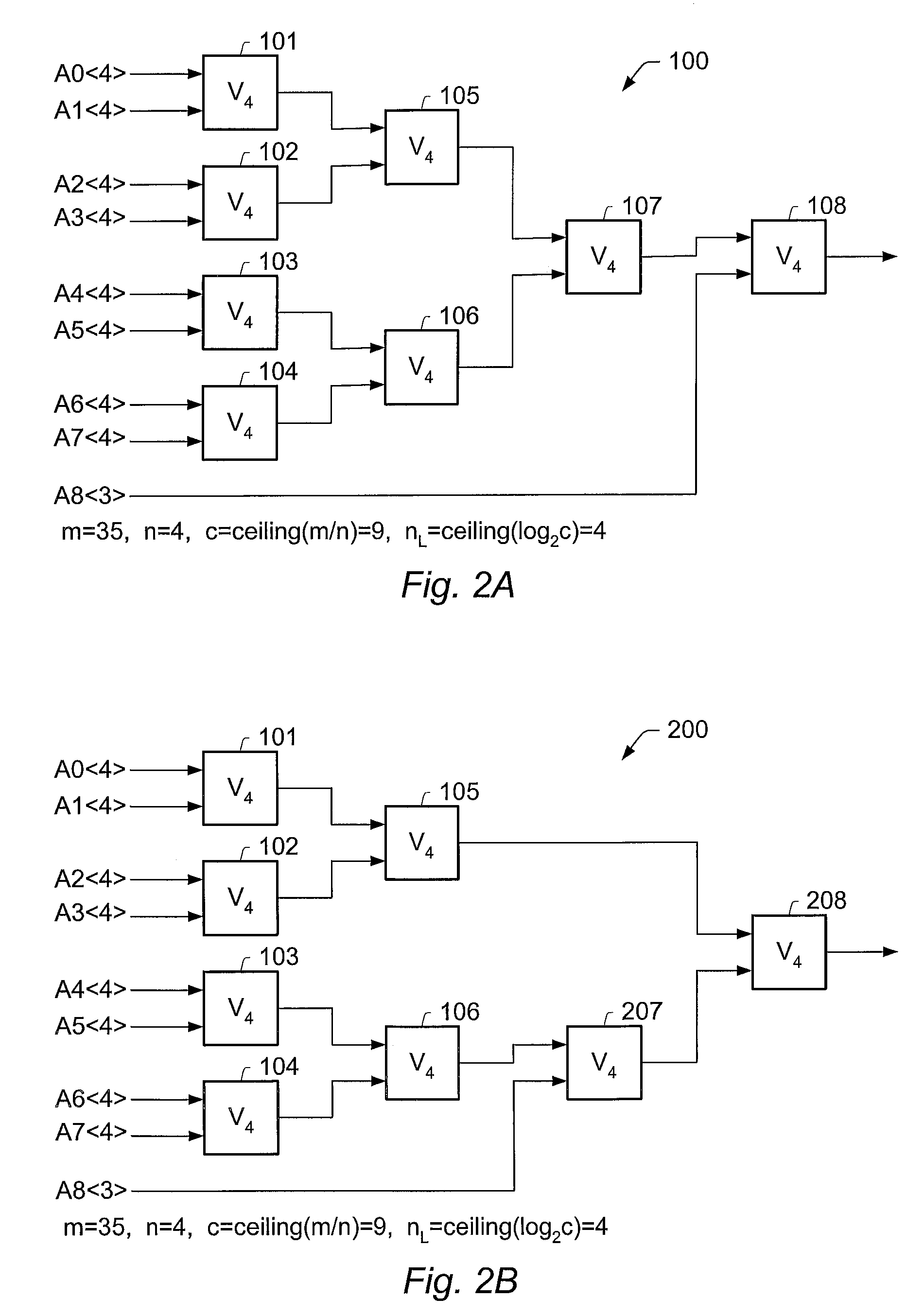Efficient computation of the modulo operation based on divisor (2n-1)
a modulo operation and divisor technology, applied in computing, computation using denominational number representation, instruments, etc., can solve the problem that the method of zimmermann does not generalize to other values of m
- Summary
- Abstract
- Description
- Claims
- Application Information
AI Technical Summary
Benefits of technology
Problems solved by technology
Method used
Image
Examples
Embodiment Construction
[0049]Let A denote an m-bit binary word, where m is an integer greater than or equal to two.
[0050]Let n be a positive integer less than or equal to m.
[0051]Let k=└m / n┘, where └x┘ denotes the floor of x, i.e., the greatest integer which is less than or equal to x. In other words, k is the result of dividing m by n and then rounding down to the nearest integer.
[0052]Observe that the m-bit word A can be represented as a concatenation of k consecutive n-bit sections and a terminal section having (m−kn) bits:
A<m>=Ak<m−kn>Ak1<n>Ak2<n> . . . A1<n>A0<n>. (1)
[0053]In general, the notation X is meant to indicate an r-bit binary word X.
[0054]The value of the binary word A can be expressed in terms of the values of the sections as follows:
A=Ak2kn+Ak-12(k-1)n+Ak-22(k-2)n+ . . . +A12n+A0. (2)
[0055]It is a basic mathematical fact that 2n mod (2n−1)=1. Furthermore,
2jn mod(2n−1)=1
where j is any non-negative integer.
[0056]Thus, it follows that
A mod(2n−1)=(Ak+Ak-1...
PUM
 Login to View More
Login to View More Abstract
Description
Claims
Application Information
 Login to View More
Login to View More - R&D
- Intellectual Property
- Life Sciences
- Materials
- Tech Scout
- Unparalleled Data Quality
- Higher Quality Content
- 60% Fewer Hallucinations
Browse by: Latest US Patents, China's latest patents, Technical Efficacy Thesaurus, Application Domain, Technology Topic, Popular Technical Reports.
© 2025 PatSnap. All rights reserved.Legal|Privacy policy|Modern Slavery Act Transparency Statement|Sitemap|About US| Contact US: help@patsnap.com



